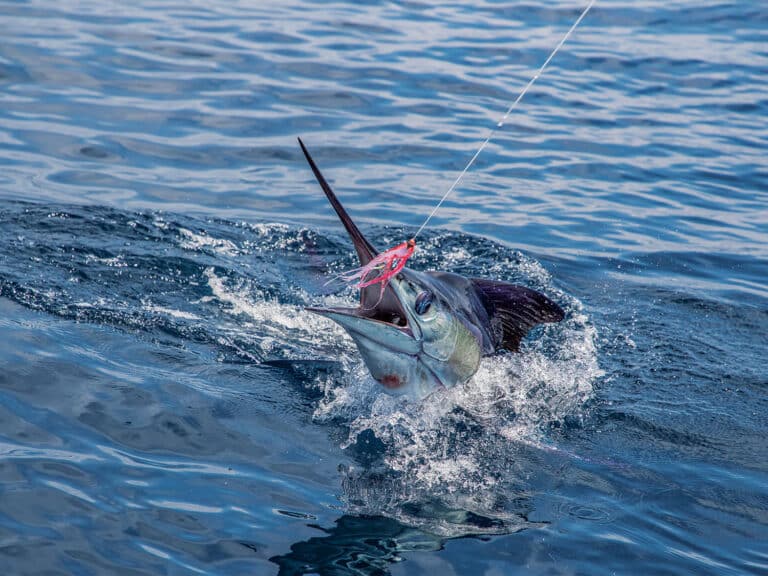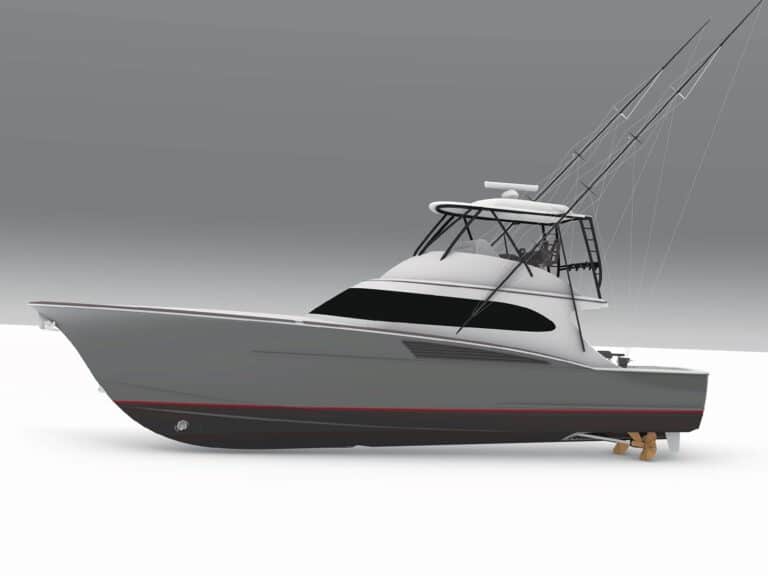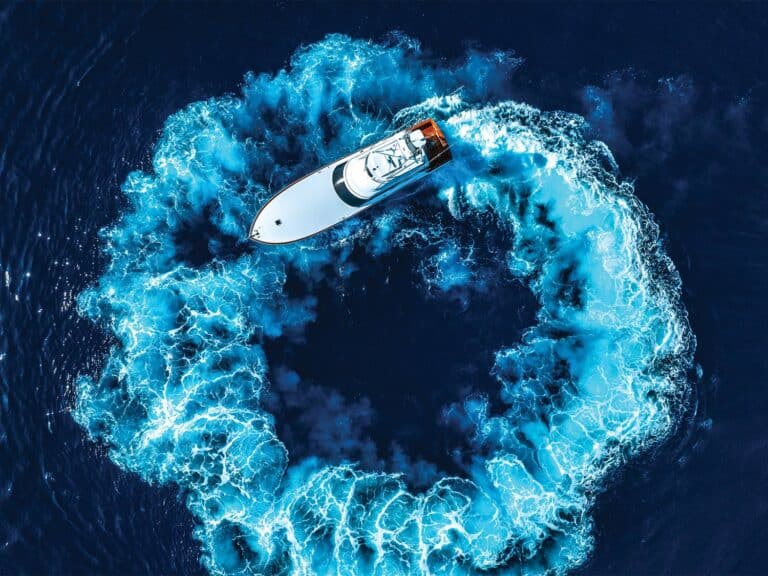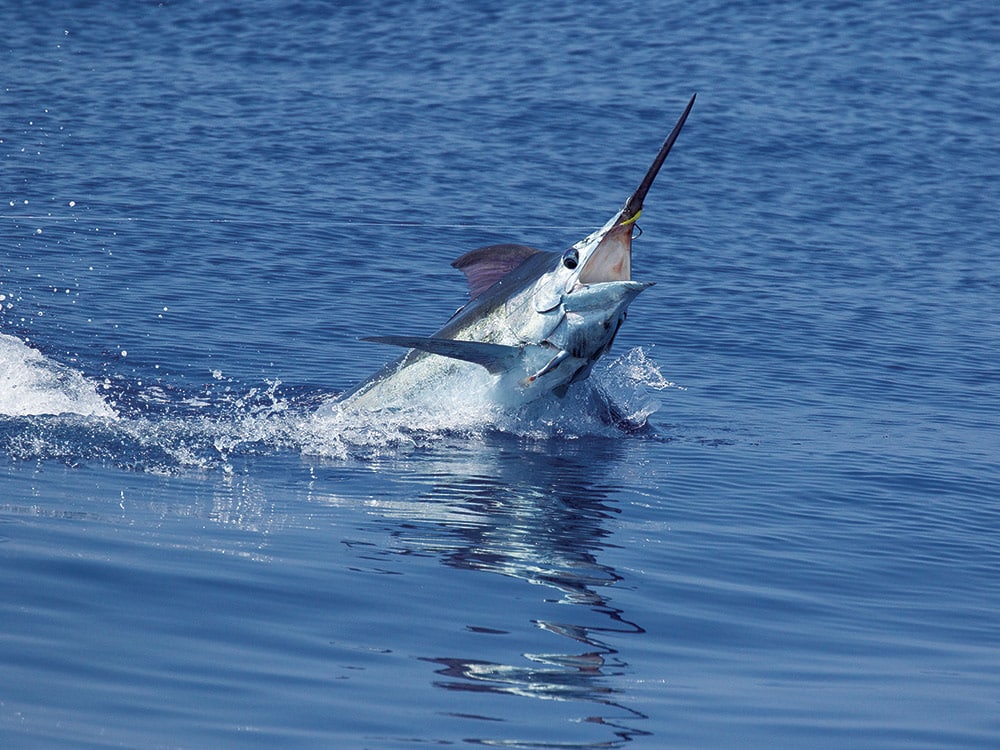
Capt. Bryan Toney has a passion for big fish; he’s caught blue marlin over 1,000 pounds in both the Atlantic and Pacific oceans and has 25 years of experience fishing out of Kona. He’s not about to put anything in the water that won’t give him the best possible chance of landing the marlin of a lifetime.
Start with the Hook
His strategy is a simple one: Pull lures on heavy tackle and make every connection between the point of the hook and the reel as bulletproof as possible. His lure hook-sets are constructed for brute strength as well as durability.
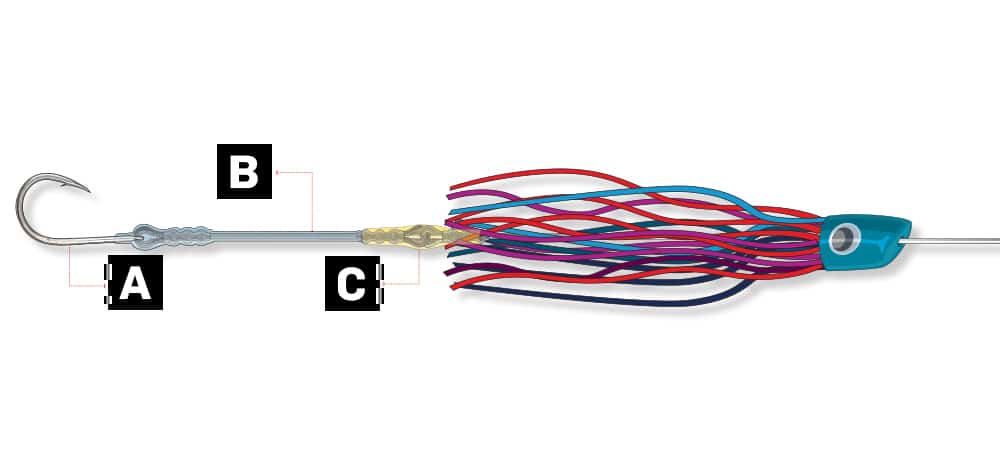
And it starts with the hook. “We’ve used a few different styles over the years, but the Dozer needle eye that we get from Melton’s Tackle is the best one right now in terms of strength,” Toney says. “I rig almost all my lures on 10/0 and 11/0 hooks, even the smaller bullets. With a larger hook, big marlin can torque it with their jaws and straighten or break it, but this is the best size to keep that from happening.”
What about the single- versus double-hook debate? Toney is firmly on the side of single hooks. “I pulled doubles for 15 years and singles for the past 10 years, and there’s basically no difference in the hookup ratio,” he reports. “If anything, it’s slightly better with a single hook. And the safety factor is huge, for the fish and for the crew.”
Bulletproof Hook-sets
Toney uses 900-pound cable to build his hook-sets, with heat-shrink tubing to protect the cable from chafing and to stiffen the setup. The double-crimped loop connection to the hook is also protected with heat-shrink tubing, while the opposite end is wrapped in high-visibility yellow tape. “I don’t heat-shrink that end because I don’t want any heat around the leader that might weaken it,” he says. “And the yellow tape can give you a clue about how well a fish is hooked too.” The hook is positioned well back in the skirt of the lure by adjusting the length of the cable. The completed hook-set is stiff, reliable and extremely durable.
The Spread
When it’s time to put the lines in the water, Toney’s spread is simple yet elegant: four heavy-tackle reels spooled with 130-pound Amilan monofilament and 200-pound-test Spectra backing (based on the IGFA’s new rule, which allows the use of heavier braided line as backing for world records).
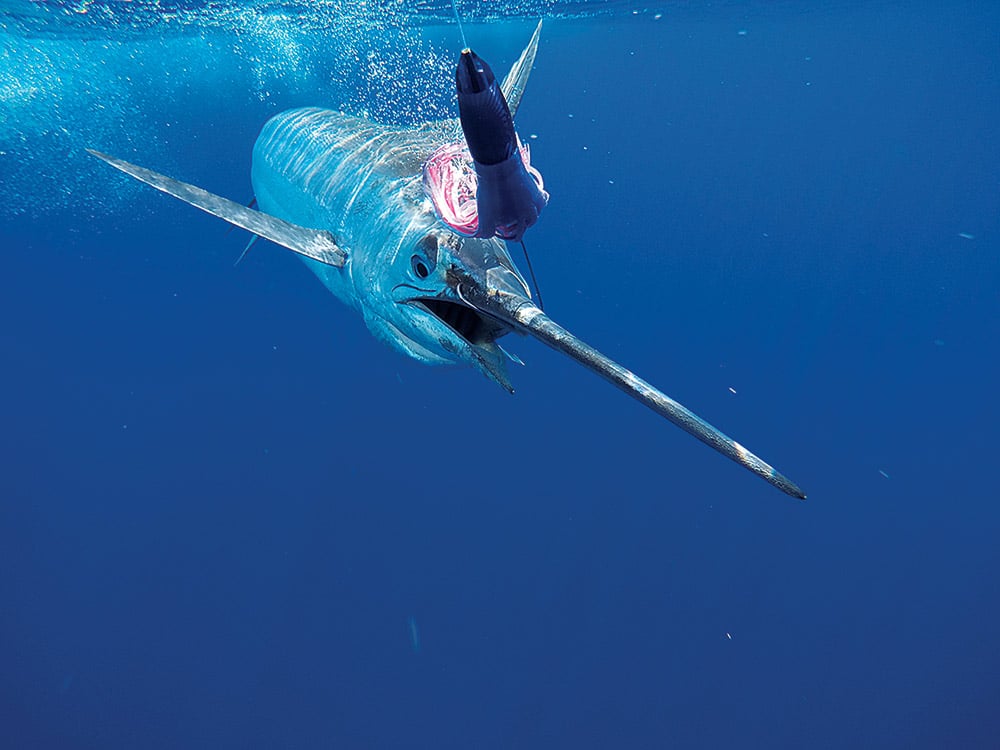
All rods are fished through tag lines, which reduce the amount of drop-back to the lure on the strike. He prefers full-length leaders rather than wind-ons, constructed from 750-pound-test Momoi Marlin Ultra Hard monofilament; a heavy-duty ball‑bearing swivel and a short Bimini twist form the connection to the main line.
Lure action takes precedence over color. “I run a lot of blues, blacks and greens, but color doesn’t really matter,” he says. “I love to pull plungers and jets on the riggers and tube lures from the corners. We use a lot of different lures from Koya, Andy Moyes, Marlin Magic and a bunch of others. The action is key though: It has to perform well for it to catch fish.”
In fact, it was an Andy Moyes XL Pusherman lure that produced the ladies all-tackle world-record 1,305-pound blue marlin for Toney and angler Jada Holt off Ascension Island in the Atlantic in 2015. His largest Pacific blue was a 1,104-pound beast landed off Kona in 2010.
If big marlin are the target, take a page from the Toney playbook and you’ll be prepared in case a monster blue shows up in the spread.
About the Author: One of Hawaii’s top charter captains, Capt. Bryan Toney runs the 43-foot Allied Marine, Melee, in Kailua-Kona. He can be reached at 808-895-3025.




